Day Trip to Hell
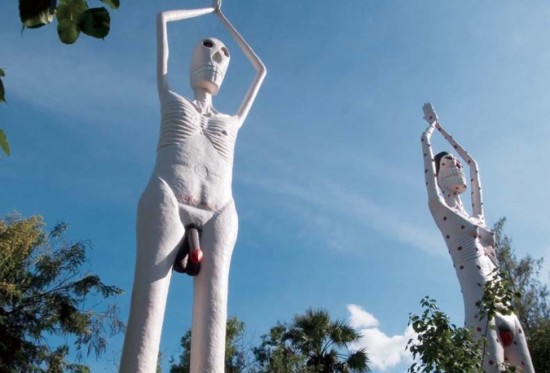
All photos © Kyoichi Tsuzuki
Hell is not a place many people want to visit.
One could even say it has a slight image problem, namely that billions of members of the human race, over hundreds, or rather thousands of years, have been convinced that it’s quite nasty, and not somewhere they personally wish to experience. Well, that’s what we assume hell to be, anyway.
Despite this bad rap, there are those who put enormous time and effort into recreating hell – a place strictly speaking only accessible after death – to give others a taste of it in the here and now. Not professional artists, but ordinary people like concrete contractors – for example, the kind of guys you might get to lay your driveway – joining forces with the faithful of a particular temple to concoct tortured visions of pain and suffering. Clusters of bloodthirsty sculptures made by amateurs, and thus with the purest intentions. A fascination with these depictions of purgatory lurking like poison ivy in corners of the present world has led me to photograph them for some years now.
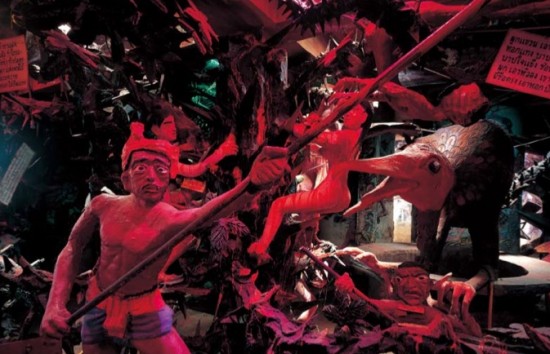
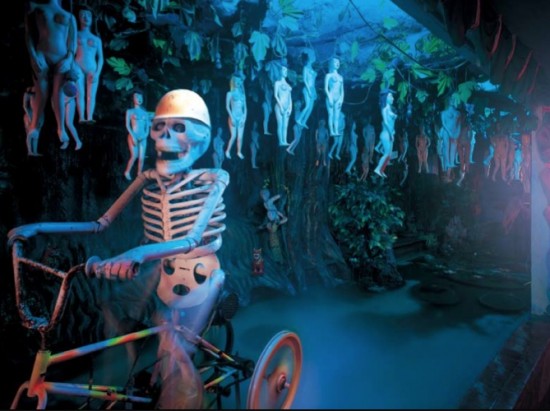
Are they art? I don’t know. What I do know is that they represent an intensity of emotion infinitely more real than any of the products that circulate these days under the name of “art.”
Thailand is a resolutely Buddhist nation, to the extent that the constitution even stipulates the king must be Buddhist. In fact over 95 percent of Thais are said to be Buddhists. Over the centuries, from the 1200s when the Thai state was formed to the present day, Sri Lankan or Theravada Buddhism has become firmly rooted in the kingdom. It takes only one visit to notice that even in today’s fast-paced, materialistic world, faith is as enduring as ever: the lines of saffron-robed monks on their early morning alms round; the proliferation of temples with their distinctive peaked roofs. Add to these the ubiquitous miniature shrines known as san phra phum tucked away in gardens or on the streets, and impossible for visitors to miss – evidence of the close ties between Thai Buddhist beliefs and the spirit worship that predates them.
While you won’t find them in Bangkok, larger temples in rural Thailand often dedicate part of their grounds to what one might call a tour of heaven and hell. Similar “religious tourist attractions” are not unusual in Japan either, but Thailand being a more tropical clime, as one might expect its heaven and hell are found outdoors, and larger than life in both scale and style. These gardens born out of an exquisite mix of Buddhism and spirit worship are both places for diligent parents to drum religious precepts into their offspring and unexpectedly intense outsider art spaces.
The first systematic Buddhist cosmology to be compiled in Thailand was the Trai Phum Phra Ruang (Three Worlds) text believed to have been penned in 1345 by King Lithai, sixth ruler of the Sukhothai dynasty that built the first Thai royal line between the 13th and 15th centuries. 1345 was also the year that the Southern and Northern Courts clashed violently in Japan and the Notre Dame was finally completed in Paris, after 200 years of construction.
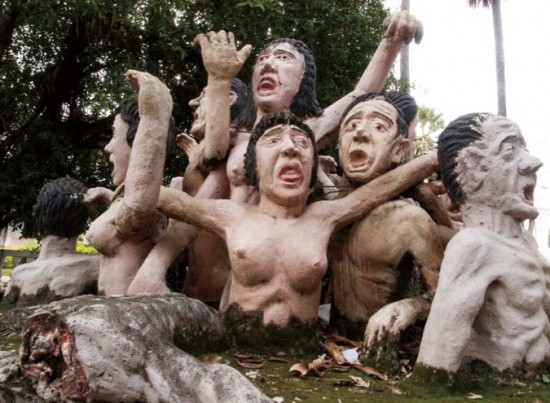
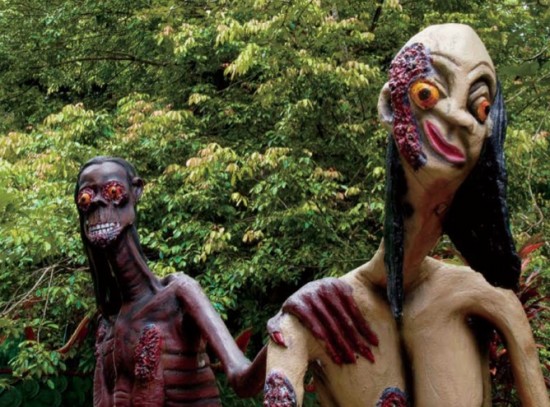
The Trai Phum has been described as a people’s Buddhist text aimed more at lay believers than monks studying the teachings of the Buddha. A similar Japanese example would be Genshin’s Ojoyoshu (The Essentials of Rebirth in the Pure Land).
The Trai Phum preaches that the cosmos consists of three worlds: the world of desire (where humans and animals live as slaves to their senses), the material world (inhabited by those who have partly succeeded in transcending worldly desire) and the immaterial world (inhabited by those who have overcome all desire and form to live only in spirit). These are further divided into a total of 31 realms, and of the three worlds to which all beings in the cosmos are said to belong, it is the world of desire that is described in most detail.
Of the sensual realms divided into heavenly beings, humans, asura (demigods), hungry ghosts, beasts and hell – dubbed the Six Paths – it is the realms from humans down to hell that the Trai Phum depicts most vividly. The murals on the walls of Thai temples we see today, the illustrations in manuscripts, the dioramas of hell gardens, all are based on this worldview espoused in the Trai Phum.
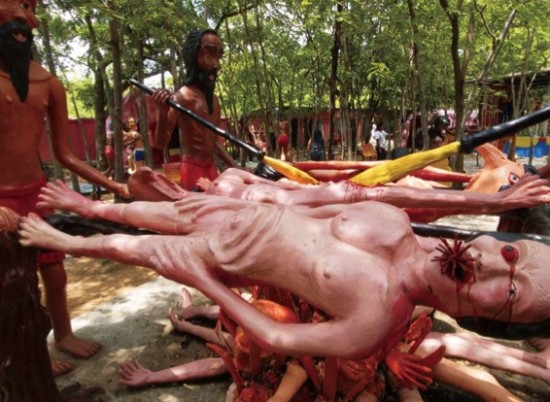
Buddhism sets down laws known as the Five Precepts for lay believers to follow. These are: to abstain from killing living beings; to abstain from stealing from others; to abstain from engaging in sexual relations with anyone other than one’s own spouse; to abstain from lying; and to abstain from drinking. Establishing such rules and providing guidelines for leading a good life is needless to say an important role of religion. The doctrine of karma – do good and good things will come to you, do bad and bad things await – is more persuasive the more horrible one’s vision of hell. Thailand’s hell gardens are none other than the hellish domains of demons rendered in the most tangible and realistic fashion.
They are magnificent illustrations employing all possible means to teach believers to obey the Five Precepts of Buddhism, and to respect temples and monks; three-dimensional diagrams that add physicality to Buddhist teachings, and simulation rides of the worlds that await us after we die.
On sale October 16: Hell – Jigoku no Arukikata – Thailand (Yosensha, ¥2940)
